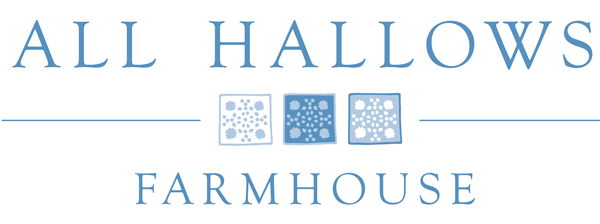Read our latest recipe in Sherborne Times pages 52-53
It does not seem possible that we moved to our farmhouse home three years ago this month. My ‘to do list’ is fastidiously crossed through every time I complete a task but the chores keep mounting. I have been known to write a job down for the pure pleasure of running a cross through the line, as it has already been completed.
Despite the things that we must do, my heart leads me either outside to the garden or beside the kitchen table and to cook beside the AGA. I am easily distracted. Now that autumn is truly upon us, I just yearn to pick, cook and feed even more. Then as soon as everyone is replete, I hear myself saying ‘what can I cook you for supper?’ As I head out to the garden with my basket under my arm.
Seasonal Treats for October
Bullace
If you stumble across a bullace or wild damson, keep it a secret. These divine fruit are one of my very favourite and perfect for making jelly, ice-cream or for flavouring gin. Similar in size to a greengage, they are dark purple and perfectly rounded. The taste is quite sour so are best cooked, rather than eaten raw. If you are inclined I would urge you to invest a few hours to seek them out. Then absorb yourself in the pleasure of making an almost forgotten recipe of ‘bullace cheese’ which will eat beautifully with game.
Apples – Egremont Russet, Cox’s Orange Pippin, Bramley’s Seedling
The British apple season is in full swing and the varieties have such charming names. How can you not fall in love with them for that reason alone? Visit a farmers market or later in the month attend an ‘Apple Day’ and talk to the growers about their particular varieties and juice blends. They will be happy to share cooking tips and advice for the best variety for your recipe. Even better seek out a pressing event to make your own juice. My particular favourite apple is Egremont Russet as it holds it’s shape perfectly for a Tart Tatin, but is also delicious served alongside a cheese board.
Pheasant
The pheasant season begins on the 1st October, at this time the birds are relatively young and are best for roasting whilst later in the season, when they have had the chance to roam further from their pens and are more developed, they are better served slow-cooked in a rich gravy.
Or remove the legs to confit and keep the breasts to be braised on a bed of root vegetables.
In Dorset we are blessed with an excellent array of traditional butchers and most sell game. For the energetic, with or without a well-trained dog, you can always make friends with your local gamekeeper who may be glad of your help to join the beating line on a shoot day. Here you will be rewarded with lots of fresh air, exercise and a brace or two of birds for you to prepare at home.
Oven-casseroled Hen Pheasant Breast
with Dry-cured Bacon, Apple and Somerset Brandy – to serve four
4 plump pheasant breasts
8 slices of streaky bacon – dry-cured from your local butcher
5 tablespoons of Somerset Brandy
225ml double cream or a combination of cream and homemade chicken stock
25g unsalted butter
2 British dessert apples – such as Egremont Russet, peeled, cored & sliced.
Seasoning – freshly ground black pepper, no salt as the bacon should be salty enough but check at the end of cooking time
You will need
Casserole dish with tight fitting lid or foil
Pan suitable to sear breasts
Cook in the baking (bottom right oven) of a four oven AGA or the roasting (top oven) of a two oven AGA
For conventional cooking preheat oven to 180°C 350 F or Gas Mark 4
Remove any rind from the bacon and using the back of a knife stretch the bacon rashers and wrap each breast with a rasher to encase each one completely. Secure with a cocktail stick if necessary.
Preheat a frying pan and once hot sear each breast individually allowing to brown, remove the cocktail sticks.
Transfer to a casserole dish, cover and place in the oven. Cook for approximately fifteen to twenty minutes.
Check that they are done. Transfer the pheasant breasts to a serving platter, allow to rest and keep warm covered with foil and on the warming plate or on a protected lid of your two oven AGA.
Remove any fat from the pan and deglaze the hot casserole dish on your boiling plate or hob with the apple brandy. Add the cream (or cream and stock), reduce by boiling and thicken the sauce. I find the floor of the roasting oven ideal to reduce sauces. Check for seasoning.
Whilst the boiling plate lid is still up, in a small pan, sauté the apple in a tablespoon of olive oil and a knob of butter. Keep warm.
Finally carve the cooked & rested pheasant breasts on the diagonal, pour over the sauce and garnish with the apple.
